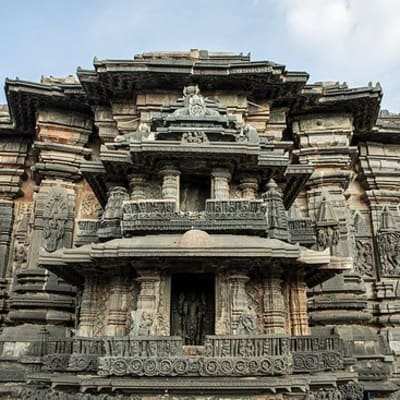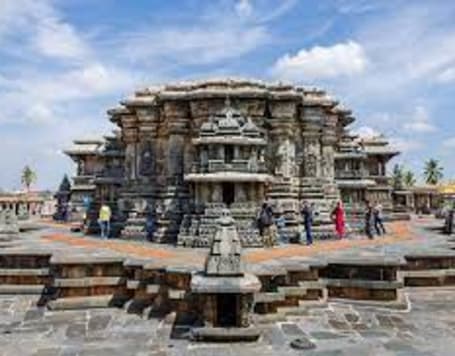The Temple of Halebid and Belur refers to two ancient Hindu temples located in the Indian state of Karnataka. These temples are considered architectural gems and are known for their intricate stone carvings, reflecting the artistic and cultural achievements of the Hoysala Empire.
Halebid Temple (Hoysaleswara Temple):
The Halebid Temple, also known as the Hoysaleswara Temple, is dedicated to Lord Shiva. It was constructed during the 12th century in the town of Halebidu, in Hassan district. The temple stands as a testament to the grandeur and architectural brilliance of the Hoysala dynasty.
The temple's architecture showcases a fusion of Hoysala and Dravidian styles, characterized by intricately carved pillars, detailed friezes, and magnificent sculptures. The exterior walls are adorned with an array of mythological figures, gods, goddesses, and celestial beings, capturing stories from Hindu epics. Noteworthy features of the temple include the two monolithic Nandi statues, the exquisite carvings on the outer walls, and the intricately carved shrines inside.
Belur Temple (Chennakesava Temple):
The Belur Temple, also known as the Chennakesava Temple, is dedicated to Lord Vishnu. It was constructed during the 12th century in the town of Belur, also in Hassan district. The temple is a masterpiece of Hoysala architecture, known for its ornate details and fine craftsmanship.
The temple's exterior walls are covered with intricate carvings that depict various aspects of Hindu mythology, including gods, goddesses, celestial beings, animals, and scenes from epics like the Ramayana and Mahabharata. The main shrine houses a stunning idol of Lord Chennakesava (Vishnu), which is a major attraction for devotees and visitors. The temple's design is characterized by the interplay of horizontal and vertical lines, intricate sculptures, and precise detailing.
Both the Halebid and Belur temples have been recognized as UNESCO World Heritage Sites, acknowledging their architectural significance and historical importance. They serve as captivating reminders of India's rich cultural heritage and continue to attract tourists, scholars, and devotees who are fascinated by their intricate craftsmanship and spiritual ambiance.


























